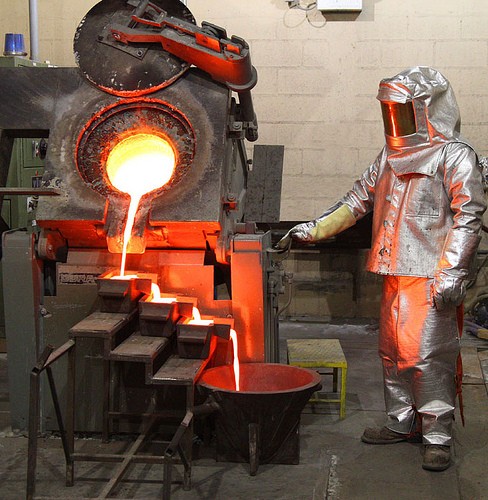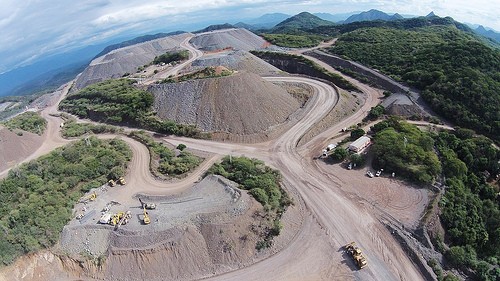McEwen Mining Media & Events
Post on: 13 Август, 2015 No Comment

What Is The Cost Of Mining Gold?
Visual Capitalist analyzed the Top 50 Gold Mines to find the cost per ounce of gold by continent. By using data from the world’s top 50 gold mines, they analyzed the all-in costs per each continent and also reviewed future deposits coming online in the future. The top 50 gold mines alone contain more than 33.5% of the world’s gold ounces.
Global Gold Mine and Deposit Rankings 2013
How Gold is Making the World a Better Place
How a Physical Gold IRA Can Protect Your Wealth
What’s Next For Gold? Bear vs. Bull Debate
The Visual Capitalist analysts each looked at the following questions from both perspectives: 1) How does the interest rate impact gold? 2) What is the inflation impact on gold? 3) What is the international impact on gold? 4) What is the short-term outlook for gold? 5) What is the long-term outlook for gold?
The Silver Series: The History of Silver (Part 1)
Today, silver has thousands of modern industrial uses and is considered a store of wealth. However, the story of this legendary precious metal begins with its use by ancient civilizations.
Silver has many attributes that made it so valuable to early peoples. It is malleable, ductile, lustrous, resilient, antibacterial, and rare. It was used to purify water and for ornate artwork – but more importantly it was perfectly suited to be a currency.
For over two thousand years, silver was used everywhere from Ancient Greece to the Spanish Empire as currency.
By 1967, all silver coins were removed from circulation in the US. And although no longer used, silver is the most widely used material for coinage in history.
The Silver Series: Supply and Demand (Part 2)
In 2011, there were 1040.6 million troy oz of silver produced. Of this, 84% was used by industry and the remaining was used as an investment.
Interestingly, traditional uses of silver only account for about a third of silver fabrication. These include jewelry, coins, medals, and silverware. Most silver is actually consumed in over 10,000 modern industrial applications.
The vast majority of silver supply comes from recycling, net government sales, and mine production. In terms of mine production, the majority of silver comes as a by-product of mining other metals. In addition, about half of all mined silver comes from Latin America.
Although all silver ever mined can fit in a 52m cube, the vast majority of silver has been consumed. While the actual amount is unknown, some experts believe as much as 90-95% of all the silver ever mined has been ‘lost’ to landfills. For this reason, there is likely less silver available above ground than gold (98% of all gold is accounted for today).
The Silver Series: Silver as an Investment (Part 3)
Silver has had double digit gains in 7 of the last 10 years. In this infographic, we look at the investment properties of silver as well as its chief differences with gold. Highlights include a study on silver correlation, volatility, performance against the US Dollar and money supply, and portfolio diversification.
The Gold Series: The History of Gold (Part 1)

Wars have been fought over gold. Love has been expressed by it. Gold has changed the landscape of civilizations and the world.
But what makes gold so great? This infographic examines the history of gold from ancient history to the gold rushes of the centuries ago. It looks at its properties and how it became not only a currency, but the gold standard.
The Gold Series: Mining and Supply (Part 2)
From ancient times to famous gold rushes, gold was first discovered in placer deposits. Placer gold occurs when host rock weathers and releases gold particles that travel downslope to a hillside, canyon mouth, or streambed.
Today most gold comes from hard rock deposits where gold is disseminated or associated with other metals and mined either through open pit or underground mining. Gold deposits form when gold is dissolved in hot pressurized fluids deep in the crust, and then transported upwards on fissures and cracks where it is deposited closer to surface.
90% of gold produced today is recovered through the cyanide leaching process.
There are three distinct streams that make up supply: official sales, recycled gold, and mine production. There has been a 571% increase in gold purchases from central banks from 2011 to 2010. Since the 2008 financial crisis, more people have opted to recycle gold as well. Recycling has increased 93% from 2002 to 2011.
Gold discoveries are declining and it is becoming more expensive to find gold. Data also shows that the grade of underground and open pit gold mines are decreasing over time.
The Gold Series: Uses and Demand (Part 3)
In the past two parts of this infographic series, we saw its rich history and also how mining and supply works. Here we look at how gold is used across the globe.














